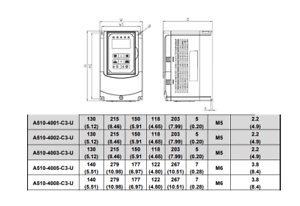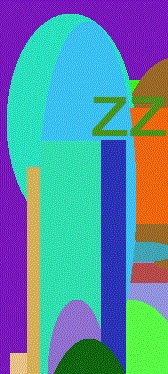Laryngeal stridor in children is a symptom that characterizes noisy breathing. The clinical manifestations of the symptom are whistling, sobbing, or grunting sounds that occur during breathing. This condition is observed in 50% of children, with congenital stridor most often noted. It is characterized by the fact that from the first hours after birth, the child has noisy breathing when screaming, crying or during feeding.
Usually, the general condition of the child does not suffer, he is gaining weight, his voice is preserved. However, with the aggravation of the condition, which is extremely rare, noisy breathing can be combined with a qualitative change in the voice, dysphonia.
Symptom development
 In most children, these symptoms of laryngeal pathology regress several hours after birth. In other cases, such symptoms may be present up to 2–3 years of age. However, even in this case, there is no cause for concern. This symptom is due to the anatomical features of the child's body, insufficient density of the walls of the larynx and trachea in children. With growing up, these parts of the respiration also develop, the cartilage of the larynx becomes more developed. The passage of air through the respiratory tract is no longer accompanied by a sound background.
In most children, these symptoms of laryngeal pathology regress several hours after birth. In other cases, such symptoms may be present up to 2–3 years of age. However, even in this case, there is no cause for concern. This symptom is due to the anatomical features of the child's body, insufficient density of the walls of the larynx and trachea in children. With growing up, these parts of the respiration also develop, the cartilage of the larynx becomes more developed. The passage of air through the respiratory tract is no longer accompanied by a sound background.
Congenital stridor goes through several stages in its development. Most often, parents and doctors have to deal with the first stage, in which the pathological condition is noted only in the first few hours after birth, then passes on its own, without requiring any therapeutic intervention. If over time the symptoms persist, this requires examination of the child, since this symptom can characterize a severe pathology.
Congenital stridor in the third stage is characterized by severe breathing disorders that require immediate clarification and treatment. The fourth stage is characterized not only by noisy breathing, but also by its violation, the appearance of other symptoms, indicating the development of respiratory failure. At this stage, it is shown that urgent measures are taken to restore respiratory patency.
Pathology accompanying stridor
Most often, a congenital pathology manifested by noisy breathing is:
- underdevelopment of the larynx and trachea, showing weakness of the walls;
- pathology of the nervous system, manifested by paralysis or spasm of the vocal cords, which intensifies during inhalation;
- congenital hypothyroidism or tumor of the thyroid gland, esophagus;
- benign and malignant tumors of the lining space;
- the ingress of a foreign body into the lumen of the larynx;
- the result of surgery, tracheal intubation, and as a result, the development of edema, infectious process.
In most cases, the development of stridor is due to congenital weakness of the walls of the larynx.
In this case, when inhaling, the epiglottis and its ligaments sink into the laryngeal cavity, which causes its narrowing. This condition often develops in premature babies suffering from rickets or malnutrition.
The second place among the reasons for the development of this symptom is given to a violation of innervation and paralysis of the vocal cords. What caused this pathology of the nervous system is not known for certain. Birth trauma is a contributing factor. Bilateral lesion of the vocal cords is accompanied by a lack of voice. In addition, aphonia may indicate involvement of the central nervous system in the process.
Benign tumors, hemangioma, laryngeal papilloma, are much less likely to cause the development of this symptom. At the same time, compression of the larynx from the outside may be due to the development of a tumor of the thyroid gland, esophagus. Congenital stridor can develop as an isolated sign, or be one of the symptoms in genetic diseases, Marfan, Down syndrome. Congenital heart disease, non-closure of the oval window, is also often combined with noisy breathing.
Diagnostic methods
When stridor breathing is detected, the child is subject to examination by various specialists who must find out the nature of the development of this symptom. First of all, it should be clarified whether the child has signs of laryngitis or croup, the most common pathological conditions accompanied by noisy breathing.
The main diagnostic method used for damage to the larynx is laryngoscopy.
It allows you to conduct an objective study of the organ and clarify the nature of pathological changes. The most informative is direct laryngoscopy performed under general anesthesia. Additional diagnostic methods can also be
- X-ray examination of the larynx and soft tissues of the neck in two projections, anterior and lateral;
- ultrasound examination of the larynx;
- bronchoscopy;
- chest x-ray;
- computed and magnetic resonance imaging of the larynx, if necessary, the brain;
- Ultrasound of internal organs;
- Ultrasound of the thyroid gland;
- general analysis of blood, urine;
- study of the level of thyroid hormones, etc.
Treatment principles
In the event that the pathology leading to the development of noisy breathing has not been identified, and the patient's condition does not cause concern, the main therapeutic measures are of a preventive nature. They are aimed at preventing the deterioration of the condition. This requires
- Regular visits to the pediatrician to assess the dynamics of the child's condition;
- Compliance with a diet and diet, when foods with preservatives, spices, rough food, excessively hot or cold are excluded. It is advisable to use mushy, well-chopped foods, in small portions;
 Conducting restorative procedures, which include hardening the child, regular walks in the fresh air, fortified food, physical education;
Conducting restorative procedures, which include hardening the child, regular walks in the fresh air, fortified food, physical education;- Massage, which is a procedure aimed at increasing muscle tone and immunity.
The course of respiratory diseases is manifested by an exacerbation of stridor, since it is accompanied by swelling and an increase in the amount of mucus in the lumen of the respiratory tract. Clinically, this can be manifested by shortness of breath, difficulty breathing, the appearance of cyanosis of the skin.
The participation of auxiliary muscles in breathing is manifested by the retraction of the supraclavicular cavities, the epigastric region and the intercostal spaces. The danger is that in severe cases, a respiratory disease of any etiology against the background of a congenital stridor can lead to suffocation and the development of acute respiratory failure.
An important part of prevention is the prevention of catarrhal diseases. In the case of their development, it is necessary to be careful with drugs that promote the production of mucus, expectorants and mucolytics. If the condition worsens against the background of ARVI or laryngitis, it may be necessary to inpatient treatment of the patient. The prescribed funds will be used to relieve spasm, improve the patency of the trachea and larynx.
Such patients do not need special medical treatment. Usually, during the first year of a child's life, the condition will return to normal. In the event that the symptomatology increases, it becomes necessary to conduct a surgical intervention aimed at improving air permeability through the respiratory tract.If the situation is caused by the weakness of the larynx wall and the depression of the epiglottis and scapular ligaments into the laryngeal cavity, they resort to laser incisions on the epiglottis, dissection of the ligaments, and possible partial removal of the arytenoid cartilage.
With the development of a tumor process, localized both in the larynx and in the surrounding organs, a thorough diagnosis of the condition is shown with further removal of neoplasms and their mandatory histological examination.

 Conducting restorative procedures, which include hardening the child, regular walks in the fresh air, fortified food, physical education;
Conducting restorative procedures, which include hardening the child, regular walks in the fresh air, fortified food, physical education;

